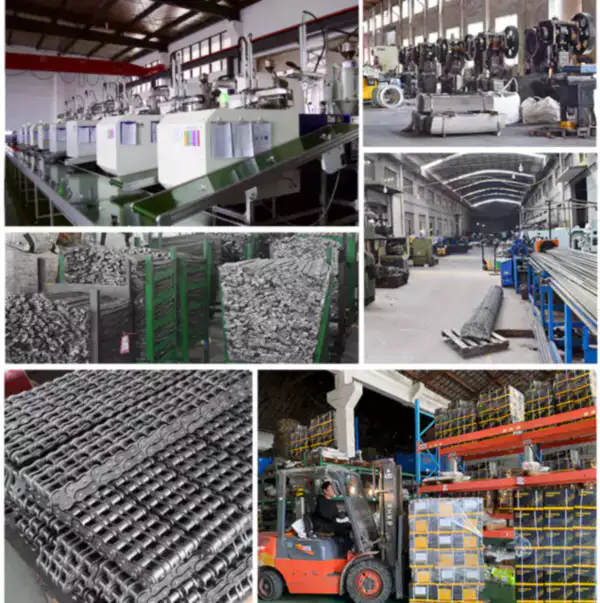Introduction
Gripper chains and conveyor belts are two commonly used systems in material handling. While both serve the purpose of transporting goods, they have distinct characteristics and functionalities. In this article, we will explore the differences between gripper chains and conveyor belts, their applications, and the factors to consider when purchasing gripper chains. Let's delve into the world of material handling systems!
Gripper Chains vs. Conveyor Belts: A Comparative Analysis
1. Operating Principle
1. Operating Principle
Gripper chains operate based on a gripping mechanism, where individual links have teeth or clamps that securely hold the transported items. This allows for precise control and positioning during material handling. On the other hand, conveyor belts rely on continuous loops of rotating belts to move items along a predetermined path.
2. Flexibility and Customization
Gripper chains offer a high level of flexibility and customization options. The modular design allows for easy adaptation to different applications, making gripper chains versatile in handling various types of products. Conveyor belts, although less adaptable, excel in handling bulk materials and maintaining a continuous flow of items.
3. Precision and Accuracy
Gripper chains are known for their exceptional precision and accuracy. The gripping mechanism ensures that items remain securely in place during transportation, reducing the risk of errors or misalignment. Conveyor belts, while still accurate, may require additional mechanisms or guides to maintain precise alignment.
4. Load Capacity
When it comes to heavy-duty applications, gripper chains have an advantage over conveyor belts. The gripping mechanism provides a higher load capacity, making gripper chains suitable for transporting heavy and bulky items. Conveyor belts, although capable of handling significant loads, may have limitations in terms of weight and size.
5. Maintenance and Durability
Gripper chains are designed for long-lasting performance and require minimal maintenance. The individual links can be easily replaced if damaged, reducing downtime and maintenance costs. Conveyor belts, while durable, may require more frequent maintenance due to the continuous belt movement and the potential for wear and tear.
Gripper Chains Purchasing Guide
| Factors | Considerations |
|---|---|
| 1. Application | Identify the specific requirements of your material handling process and choose a gripper chain that suits your application needs. |
| 2. Material | Select the appropriate material for the gripper chain based on factors such as load capacity, environmental conditions, and compatibility with the transported items. |
| 3. Gripping Mechanism | Consider the type of gripping mechanism required for your application, such as teeth or clamps, and ensure compatibility with the items to be transported. |
| 4. Size and Configuration | Determine the optimal size and configuration of the gripper chain to fit your material handling system and accommodate the size and weight of the items. |
| 5. Cost and Supplier | Evaluate the cost-effectiveness of the gripper chain and choose a reliable supplier with a proven track record in the industry. |
Sprockets for Gripper Chains
Gripper chains and sprockets are complementary components in material handling systems. Sprockets provide the necessary power transmission and guidance for gripper chains, ensuring smooth and efficient operation. The selection of appropriate sprockets is crucial for the optimal performance of gripper chains.
Our company offers a range of high-quality sprockets designed specifically for gripper chains. These sprockets are meticulously engineered to match the requirements of different gripper chain types and ensure reliable and precise movement. Check out the image below for a glimpse of our grip chain sprockets:

With our extensive expertise in gripper chain systems, we are proud to offer compatible sprockets that guarantee optimal performance and durability. You can rely on our products to enhance the efficiency and reliability of your material handling processes.
Our Advantages
- Highly durable gripper chains that withstand heavy loads and harsh environments
- Customization options to cater to unique material handling requirements
- Efficient and precise gripping mechanisms for accurate positioning
- Seamless integration with our premium sprockets for enhanced performance
- Competitive pricing and reliable customer support

Q&A: Gripper Chains
Q: What industries can benefit from gripper chains?
A: Gripper chains find applications in various industries, including automotive assembly, packaging, food processing, and logistics. Their versatility makes them suitable for both heavy-duty and precision handling tasks.
Q: How do gripper chains ensure item security during transportation?
A: Gripper chains utilize teeth or clamps to firmly grip the transported items, ensuring their stability and minimizing the risk of accidental movement or damage.
Q: Can gripper chains be used in high-speed material handling systems?
A: Yes, gripper chains can be adapted for high-speed applications. However, it is crucial to consider factors such as acceleration, deceleration, and gripping force to ensure safe and efficient operation.
Edited by Zqq.
